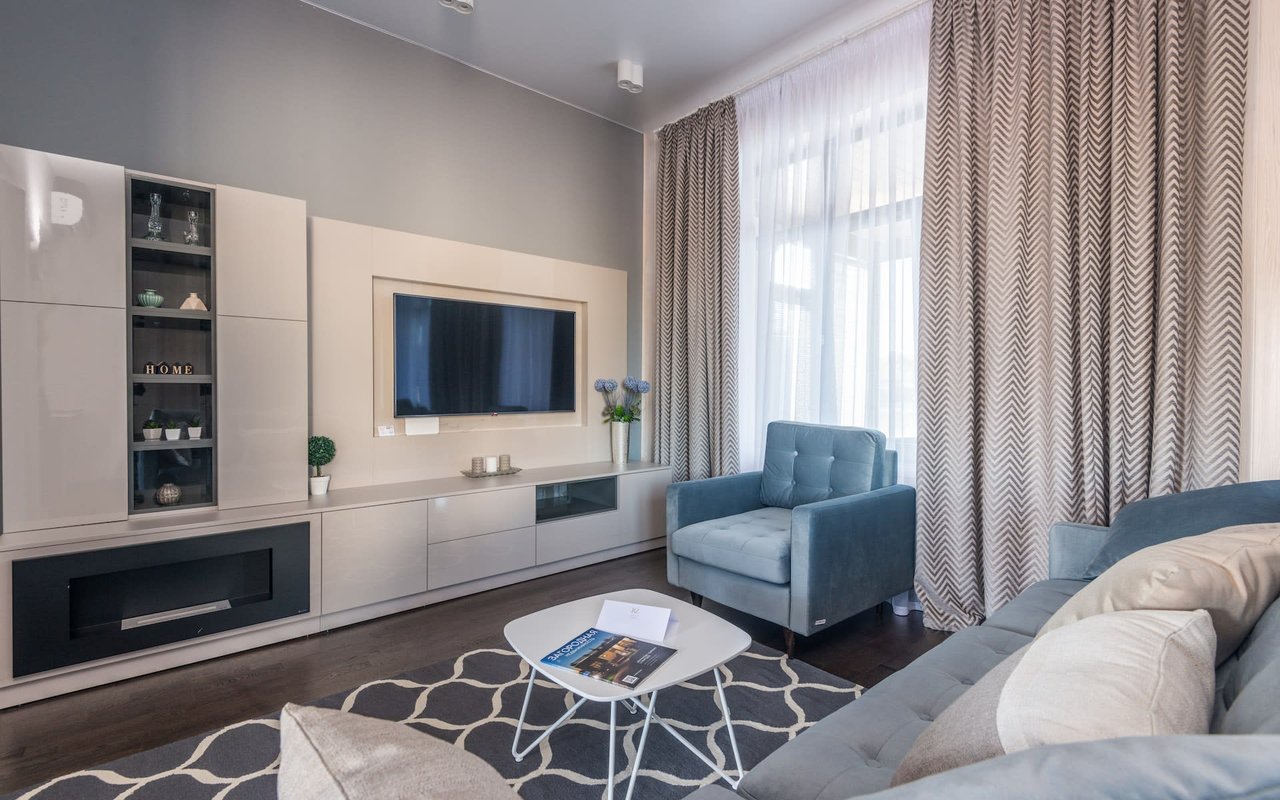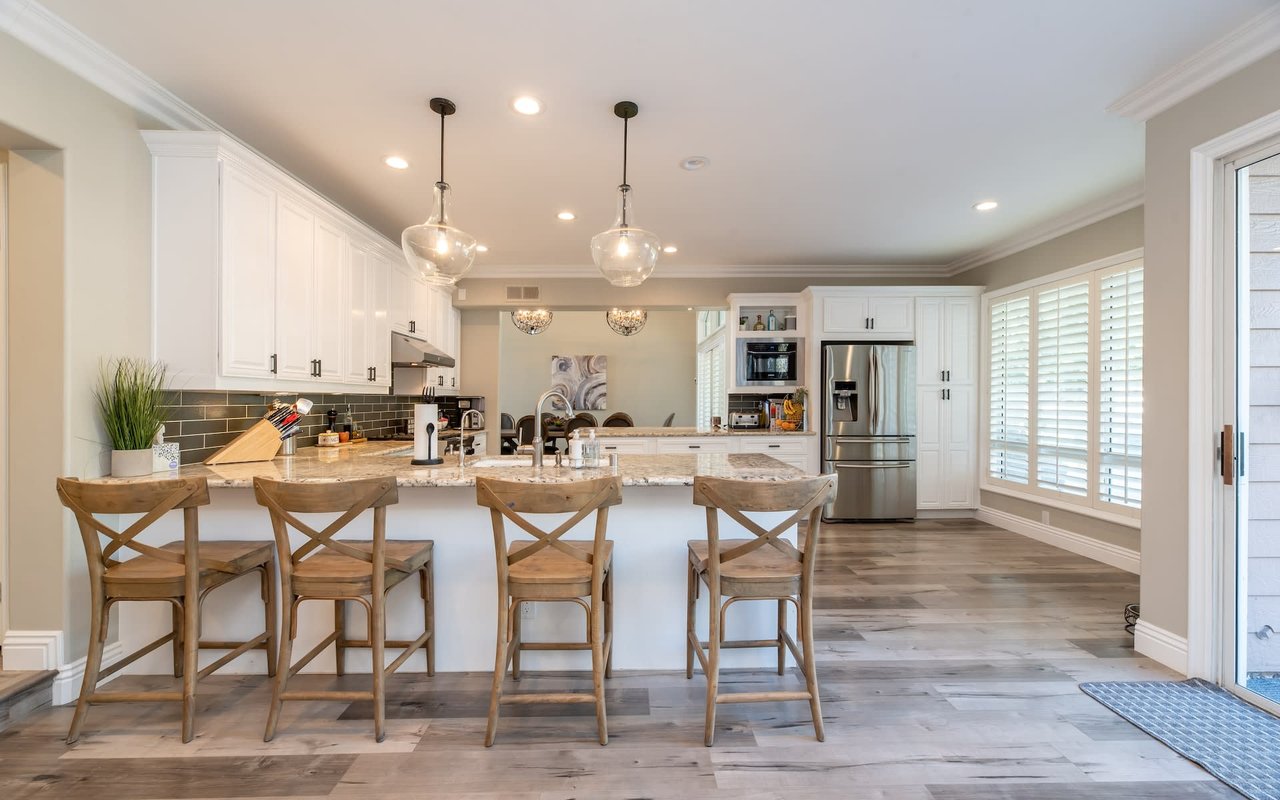Staging is the act of sprucing up and setting up a home's interior to make it as visually appealing as possible to a prospective buyer. Creating an appealing home, one that potential buyers can envision themselves living in - is the best investment in the sales effort.
Sellers often fail to take full advantage in this regard, as it takes considerable time and work. However, the payoff is proven. Staging is considered one of the most effective marketing strategies to increase the value of your home.
This strategy is effective in any market, in any type of home property being listed. It applies equally to single-family houses, apartments, townhouses, and condos. This approach works! Agents and sellers using this tactic have a greater chance of selling the property for more money.
Staging the home will:
- Distinguish it from the competition
- Attract top dollar from homebuyers
- Provide a visual edge over the competition
Staged Vs. Non-staged Case Study and Report
Dear Reader, I wanted to give you the most convincing proof possible. Many people find it hard to believe that the simple act of staging helps one home sell for more than another, similar home.
In my research, I looked for examples of similar houses being sold for differing amounts of money, where only one of the two houses was staged.
The clearest example I could find was in the case of these two listings.
This development has 200 equivalent townhouses.
Every single townhome in the neighborhood is three stories, with three bedrooms and three bathrooms. Every unit has the same floor plan.
I looked for two sales there, and found these:
- Townhome A sold on August 26.
- Townhome B (5 doors down) sold on July 26, for 40,000 dollars less.
I visited this neighborhood, and I am familiar with these properties.
You could not find a better example of two identical properties that sold for different prices.
The lots the units sit on are identical, as far as the desirableness of the location.
Both units had the same kitchen plan, with the same cabinets and a tile floor.
Both units had nice hardwood floors in the living room and carpeted bedrooms.
Every important detail of these townhouses was identical. I studied every aspect of these sales to find what made the difference.
There are two reasons one home sold for $40,000 more than the other:
- Townhome A was professionally staged, giving it a more appealing appearance.
- The agent selling Townhome A took higher quality, more attractive photos of the home.
Those two seemingly small actions made the $40,000 difference!
The buyers of Townhome A made a higher offer because the agent presented the home in a more appealing and attractive way.
The Power of Staging When Selling a Home
Consider these results from surveys conducted by the National Association of Realtors®":
- Staged homes spent 50% less time on the market than homes that were not staged.
- Staged homes sold for more than 6% above asking price.
- A staging investment of 1% to 3% of asking price generates an RO1 of between 8% and 10%.
- Homes staged prior to listing sold 79% faster than homes staged after listing.
What Do Buyers Want to See?
Most home shoppers are envisioning a fresh start. If they can picture themselves living in the home, the home will be easier to sell. This is known as "interior curb appeal" where the eyes are drawn to inviting spaces and light, as well as to unique features. Each room needs a purpose or suggested use. The home must feel new to reflect ease of upkeep. The goal is to create a clean, simple, and contemporary feel. Painting, updating fixtures, and eliminating stained carpets and popcorn ceilings can affect the saleability of the home by 75%!
Neutralize for Visual Appeal
The idea is to neutralize the home regarding personal taste or decoration, so buyers can easily envision the home as it would be outfitted in their taste or with their possessions without the distractions of the seller's taste and possessions. In staging, distractions are removed so the home shopper can imagine living in each space of the house.
An effective way to achieve this is to paint all rooms in a neutral color. A wide range of neutrals is available, from soft grays to warm beiges. Painting the interior gives newness and freshness and can make the home appear more spacious. Using the same color in visibly adjacent rooms gives the house a seamless look and uninterrupted flow.
Changing your window coverings to match the walls can also create an illusion of more space. Dark or bold wall colors can dampen interest in a home if used in large spaces; however, they can occasionally be used effectively as accent colors.
Focus on Furniture: Less is More
In staging, a visibly inviting space is created so that the home shopper can envision or imagine life in that space. Minimization is the key. If the seller's personal taste and style are showcased while the home is on the market, it may be a sale distraction. Preparing for moving is part and parcel of selling a home; it might as well be done at this stage of the process, to enhance the property's saleability.
Shortly, we will examine depersonalizing the home, a key step. First, however, we must examine the concept of creating space by minimizing furniture.
Buyers are attracted to homes flooded with light and roominess. They are equally put off by cramped homes filled with unnavigable spaces. Home shoppers want to walk through a house without obstacles in the way. Space and storage are high on the list of buyers' desires, so every area of the home should feel spacious.
Remove all unnecessary furniture from living spaces. Store it while the home is marketed. Closets, pantries, and storage rooms must be free of clutter and look organized. Pruning back unnecessary items can create interest by showcasing space and storage in areas such as closets, attics or basements.
Furniture placement is an easy way to highlight unique house features. A grouping of chairs in front of a fireplace will draw attention to it. Avoid pushing furniture close to the walls. Reposition easy chairs into floating group spaces.
Every room must be staged to show function. An empty room used for overflow of boxes, possessions, or unwanted items should be transformed into a usable, desirable space. Clean it out and create an office space with a desk and chair, or a reading room with a lamp and recliner. Exercise equipment might be arranged to feature it as a workout room. Every room should have a purpose and be user-friendly. Make your home's traffic flow smoothly, so buyers can browse each room without effort.
Emotional Cues
Once every room has a purpose, creating atmosphere is crucial to make the home desirable. Decorative touches of greenery, flowers, and coffee table books give life to a room. Creatively hung wall art can do the same. A bedroom that has one bed with one pillow and blanket may make the room seem bare and lonely. By adding a table with a lamp and a rocking chair draped with a lap robe, heightens its appeal. Be sure to add elements of the same color, shape, or texture to unify the room. Any splashes of color should appear in wall art or any place you want to draw attention.
Learn to strike a balance between staging and living in your home. You can even seasonally decorate your home without dashing its appeal. The main goal is to keep your home clean and free of clutter that distracts would-be buyers. Even simple things can make a big impact on the final sale price of a home.
You have two options for staging a home: do it yourself, or hire a professional home stager.
To Stay or Not to Stay?
Home sellers often ask whether they should stay in their home while it is on the market, or move out. There are pros and cons to both, and factors that can tip the scale to one side.
Pros of Moving Out
If the seller has engaged a real estate agent, the burden of showing a vacant home is virtually eliminated. The agent will field all calls, set appointments, and show the home.
Buyers' real estate agents are also more likely to want to show vacant homes. If agents have 20 home options and 15 occupied, they may well show the vacant homes out of convenience. They don't have to call and make an appointment and can simply go over and use the lockbox.
Further, the continual pressure to keep daily life from affecting the home's pristine staging presentation is eliminated. The seller is not under constant pressure to keep the home in immaculate showing condition. If you're someone who might struggle to keep your home in turnkey condition for showing purposes - for example, if you have young children - consider vacating before putting the home on the market.
Cons of Moving Out
A vacant home can signal that the homeowner is a "motivated seller" who needs to sell quickly. Consider this example found on an online real estate forum. A buyer saw that a home was vacant and offered $30,000 less than the asking price. The buyer was sold on the home anyway and would have paid more, but "haggling" began well below asking price because the buyer assumed the owner was desperate to sell.



